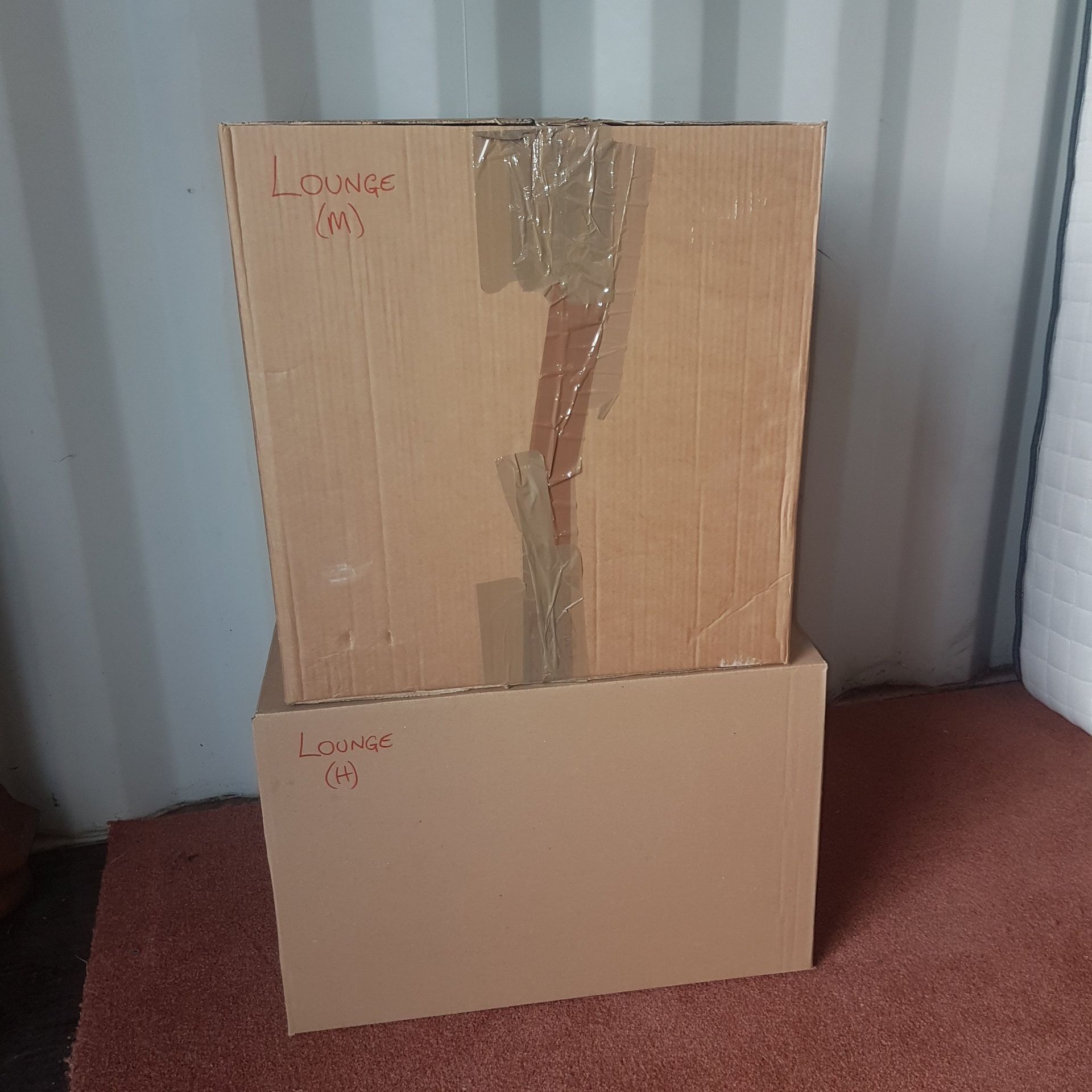Moving with cats
- by Paul Dye
- •
- 25 Jun, 2019
- •
Moving house with a cat: A step-by-step guide to relocating with feline friends

Moving house is undeniably a stressful life event. But have you ever considered how stressful it might be for your cat? Feline friends are often viewed as independent creatures, but in fact, they are quite sensitive. Their environment is important to them and any sudden change may prove unsettling.
This is why it is of utmost importance to incorporate a ‘cat plan’ into your moving strategy (one more detailed than a checklist of all their belongings!). This means considering what the impact on them will be when your home becomes a maze of boxes. It means thinking about how they will manage the journey to your new home, and how they will feel about exploring it – and their ‘new’ outside.
It’s important to consider as well, the administrative aspects of moving with a pet: updating your cat’s microchipping information, changing collar tags (if linked to an address) and if necessary, registering at a new vet nearer your new abode.
All these things should be worked out in advance in order to ensure your cat – and by extension, you – experience a smooth transition from one home to the next.
For a comprehensive plan on how to move house with your cat, keep reading.
Two months before moving: book your cat’s place in a cattery
If you are concerned the disruption created by your move will be altogether too much for your cat, it might be a good idea to send them to a cattery for a few days. Book their place a month or so in advance to make sure there’s room for when moving week arrives.
If this is your preferred POA, skip to the ‘Moving Day’ section below to find out how to introduce your cat to your new home.
If you decide to keep your cat with you, however, read on.
Three weeks before moving: Prepare your cat for the boxes
With moving day approaching, it’s likely all thoughts will be on The Packing Strategy. Your cat is likely to sense a shift in atmosphere and it is important you are sensitive to this.
Involve your cat in the lead-up by introducing a few boxes into your home a week or so before they are needed. This will allow your cat to familiarise themself with these ‘alien objects’, so that when more arrive it will be less alarming for them.
Two weeks before moving: Packing with your cat
With two weeks to go, it’s time to grit your teeth and start packing. First and foremost, create a comforting space for your cat to go; somewhere familiar they can retreat to when things start to change a little too much for their liking.
Pick a room you can either leave until last to pack up or one which will still feel familiar even when soft furnishings and other small household items have been removed. Make sure you secure all windows and that the door can be firmly shut. Place some of your cat’s familiar belongings around the space: their toys, a water bowl, litter tray, food and even their basket. It might be an idea to start feeding them in that space as well, to ensure they feel as comfortable as possible.
During the packing period, make sure you give your cat lots of attention. As their familiar environment starts to change, it is likely they will need reassurance. Play with them often and show them lots of love.
If your cat is prone to disappearing for a few days, now is the time to start thinking about restricting their outdoor access. The last thing you want is for moving day to arrive and to still be awaiting your cat’s return.
A week before moving: Sort out cat administration
By now, your cat should be used to their new comfort space. Put a sign on the door so when the removal team arrive, they know not to go into that room – you don’t want a runaway cat at that stage.
With your cat safely indoors from here on in, it’s ok to change their microchipping information so the new contact details become those of your new address. If their collar tag is linked to your home, make sure that is updated as well. Depending on how far you are moving, you may also want to register your cat at a new, closer vets.
At this point, you should also figure out what your cat’s next comfort space will be in your new home. The idea is to secure your cat in that space (preferably a room) on moving day, and leave them to quietly explore it, away from the hustle and bustle outside. It would also be a good idea to check that your new place is cat-safe – for instance, that no poisonous plants, like daffodils or tulips, have been left behind, or that any building or decorating work still in progress won’t prove hazardous for your pet.
If you are transporting your cat to your new home in a carrier, now is also the time to introduce the carrier into your cat’s comfort space. This gives them a week to get used to it – and if you put a few treats in on occasion, it should further warm them to it.
A few days before moving: Pack your cat bag
What would make moving day more stressful? Forgetting where you packed that specialist cat food and having to tear open every box in sight on arrival trying to find it.
Make sure your cat’s must-have items are packed in a separate bag and that these go with you in the car on moving day. Things to think about include: a basket, favourite toy, litter tray, a few day’s worth of food, a water bowl and perhaps an old piece of your clothing (more on this later). You might also need paper towels and pet-friendly cleaning tissues or disinfectant in case your cat has an accident en route in their carrier – or in your new home.
Moving day morning: Secure your cat in their comfort space
First thing on moving day, secure your cat in their comfort space. Make sure they have lots of water, that all the windows are secure, and the door can be fully closed. Double-check that a note to the removal team – warning them not to enter – has been firmly attached to the door.
Moving day: Travelling with your cat
If you are travelling far on the day, feed your cat a reduced breakfast so as to alleviate the possibility of them getting carsick on the journey. When it’s time to leave, coax your cat into their carrier – do not force them – and take them to the car. Make sure the carrier is secure in your vehicle and won’t move around during transit. If possible, strap it in with a seatbelt.
Top of the list when travelling with your cat should be: temperature and hydration. If it’s a hot day make sure the air conditioning is on or a window is open, so your cat gets plenty of fresh air. Although, don’t open the window unless your cat is safe in their carrier – there is a chance they might try to escape.
Depending on the length of your journey, you may need to stop to give your cat some water. If it is a long journey, make sure you stop at regular intervals. You may also need to let your cat out of the carrier to stretch their legs and use the little tray. Ensure all the car windows are shut when you do this, so as to prevent your cat leaping out.
Moving day: Arriving at your new home with your cat
When you arrive at your new home, take your cat (in their carrier) into the area you have designated as its comfort space. Arrange its toys, basket, water bowl and litter tray around the room, and position your old item of clothing (which should smell reassuringly of you) somewhere too. Open the carrier door, then leave the room and shut the door. This will enable your cat to explore it in their own time.
After moving day: Let your cat slowly explore
You know your cat best. When you think they can manage it – maybe the evening of moving day or a few days later – let your cat out of their comfort space and allow them to explore another room. A good idea would be to wipe a cloth around their face and neck, to pick up their scent, then wipe that same cloth around your new house (at cat level). This will make the new space smell familiar to them. Limit your cat’s exploration range to one room at a time.
It is important not to let your cat out of the house for at least 2-3 weeks after moving in. Check with your vet if you’re unsure how long to leave it. They have to get used to their new home and introducing them to a ‘new’ outdoors will only compound the unfamiliarity. During this time, make sure your windows are not opened too wide or any front or back door left open unguarded, as it’s possible your cat might get out.
If your new house doesn’t have a catflap, this would also be a good time to get one installed. Make sure it is bolted however, or at least secure, until you are ready to use it.
Two to three weeks after moving day: Introduce your cat to the outside
This step only applies to outdoor cats (obviously!). When you sense your cat feels settled in their new territory you can introduce them to the outside. As before, make sure their microchip is linked to your new address, their collar tag has been updated and you have registered with a nearby vet.
If your new garden is enclosed, it might be a good idea to rub the cat cloth referenced earlier around the garden walls, so as to let neighbouring cats know this is not their territory. It will also help your own cat feel more relaxed. Scattering some of your cats used litter outside is an alternative approach.
A good way to start introducing your cat to the outside, is to do so a few minutes before feeding time. Open the door to your garden and see what happens. Do not force your cat to go outside as this has to be an organic process. When they feel brave enough to step outdoors, watch them closely for a few minutes, then call them in for food. Repeat this a number of times over the next few days or weeks until your cat gets to know your outside space well.
All moved in: What to do if your cat returns to your old home
If you’ve not moved far from your old address, there is a chance your cat might return there. First up, ensure the new owners are aware and tell them not to welcome your cat in or feed them. Make sure you tell your old neighbours too.
If you sense your cat might try to go back to your old house, it is advisable to keep your cat indoors for a little longer before letting them out, just to allow them time to build up a bond with their new territory.
Give them lots of attention during this time as well – so they want to stay close to you. Feeding them little and often is another way of ensuring they don’t venture too far away when they go outdoors.
If you have any problems or worries about moving home with your cat, speak to your vet for advice.
Sources
bluecross.org.uk (https://www.bluecross.org.uk/pet-advice/moving-house-and-travelling-cats)
cats.org.uk (https://www.cats.org.uk/uploads/documents/cat-care-leaflets-2013/EG03_Moving_house_JUN14.pdf)
pets.webmd.com (https://pets.webmd.com/cats/guide/moving-new-home-cat#1)

There's no better time to declutter than when you move home. Take this as an opportunity to really decide whether you need items you've been hanging onto for a while. Remember that the more things you take with you, the more it will cost you to move. Use eBay, Facebook and Gumtree to sell what you can, donate where possible and responsibly dispose of anything else.
Try to arrange your move for a weekday (not a Friday if possible!)
If there are any issues with getting keys or something's not right at the new property, you'll have more chance of getting it sorted on a weekday than at the weekend. If you're moving on a Friday or at the weekend any issues aren't likely to be resolved until Monday at the earliest.
Collect or order boxes and packing equipment
If you're on a budget, supermarkets and other shops often have a lot of boxes to get rid of, especially on a delivery day. You can also try local Facebook groups, websites like Freecycle or Gumtree, or a place of work/study. If you want to buy packing equipment, including boxes, tape, stickers and pens, we can help out - contact us with your details.
Start Packing
You can never start packing too early. Start with your least-used rooms or spaces first: the garden shed, the attic or under the bed are good places to begin. Remember to make an inventory so you know what each box contains and where it needs to go. Make sure you pack your boxes correctly - not too light or heavy, and make sure you can shut the lid and tape it down: this will make loading the van much easier and will help keep the cost and time of your move down. Keep some boxes aside for last-minute packing.
Make a to-do list or calendar
A to-do list or calendar can really help you organise your move, especially for tasks such as switching utilities or having new furniture delivered.
Notify utilities
You'll need to turn off or transfer your utilities from your current home: e.g. gas, electric, water, phones, internet, TV licence. Depending on your provider you may be able to do everything online - just remember to do it in advance so you're not left without the essentials when you move in.
Notify others
You'll also need to notify your local/new council, the DVLA, banks, shops (i.e. if you have a loyalty card), schools if necessary, inland revenue for tax purposes, insurance providers.
Arrange disconnections
You may also need to get somebody to come and disconnect your appliances such as washing machines or ovens. This is absolutely necessary if you own a gas cooker: these must be disconnected and reconnected by somebody with a gas safety certificate, or you may endanger yourself. At the very least, you would likely not be covered by insurance if something were to happen.
Renting?
If renting, give notice to your agent and/or landlord and arrange for the property to be cleaned by a professional, it will make the day far less stressful. If money is tight you can always do it yourself, but wait until the property is empty before starting. You'll also need to arrange a final checkout.
Going far?
Get your car serviced if you're making a long distance move - the move will likely be stressful enough without your car breaking down.
Change health services
If necessary, register at new doctors, dentists, opticians, vets etc. Also make sure you have enough medication to last until you can access the new services.
Book a removals company
Shop around for quotes, check reviews and remember to book early so you don't miss out. Always check reviews! Related: depending on where you're moving from/to you may need to organise permits for vans to park outside your current or new home - having to park further away will increase time and cost of your move if using a company.
Book storage if needed
If you need to arrange storage for any items make sure to do this early. Getting items into storage as soon as you can will cost more but can save you a large headache later on.
Children/Pets
Arrange for children and pets to be looked after if possible - ask family and friends! Having so much going on can be stressful and disorienting, and you'll be too busy to be able to do much about it. Try to get moved into your new home before introducing pets - it'll help them acclimatise easier and become less stressed.
Book time off work
Remember to book time off work if necessary! It may also help to book a few days off before and after your move so you can get settled.
Clean the new place
If you already have keys and previous owners have moved out: arrange a clean of your new home. If it's been vacant for a while it may be quite dusty.
Getting new furniture/furnishings?
If you need new carpets or furniture, order them for the day after you move in (unless you already have the keys before you move - in which case get them delivered before you move in!)

There are various methods used including:
Load up and disappear – the van gets loaded up and then drives away, with all your items, never to be seen again.
Our van is too small – they start loading then notify you that their van cannot carry all your possessions, they then say that you will need to pay more to come back and get the rest. Alternatively, they load all the valuable items first, then drive off and do not return.
Extra charges – they call you up a day or two before moving day and try to charge more, as they are really busy and will call off the move if you don’t. This leaves you in a position where you either pay extra or try to find someone else, which may be difficult at short notice. Given the stress that you are likely to be experiencing at this time you may decide just to pay up.
Hostage – This is really a variation on the load up and disappear scam, except they don’t totally disappear, instead they contact you to allow you to buy your own items back. As some of your boxes are likely to contain personal items that cannot be replaced, such as family photos, they cannot sell them, so they try to blackmail you, the customer.




